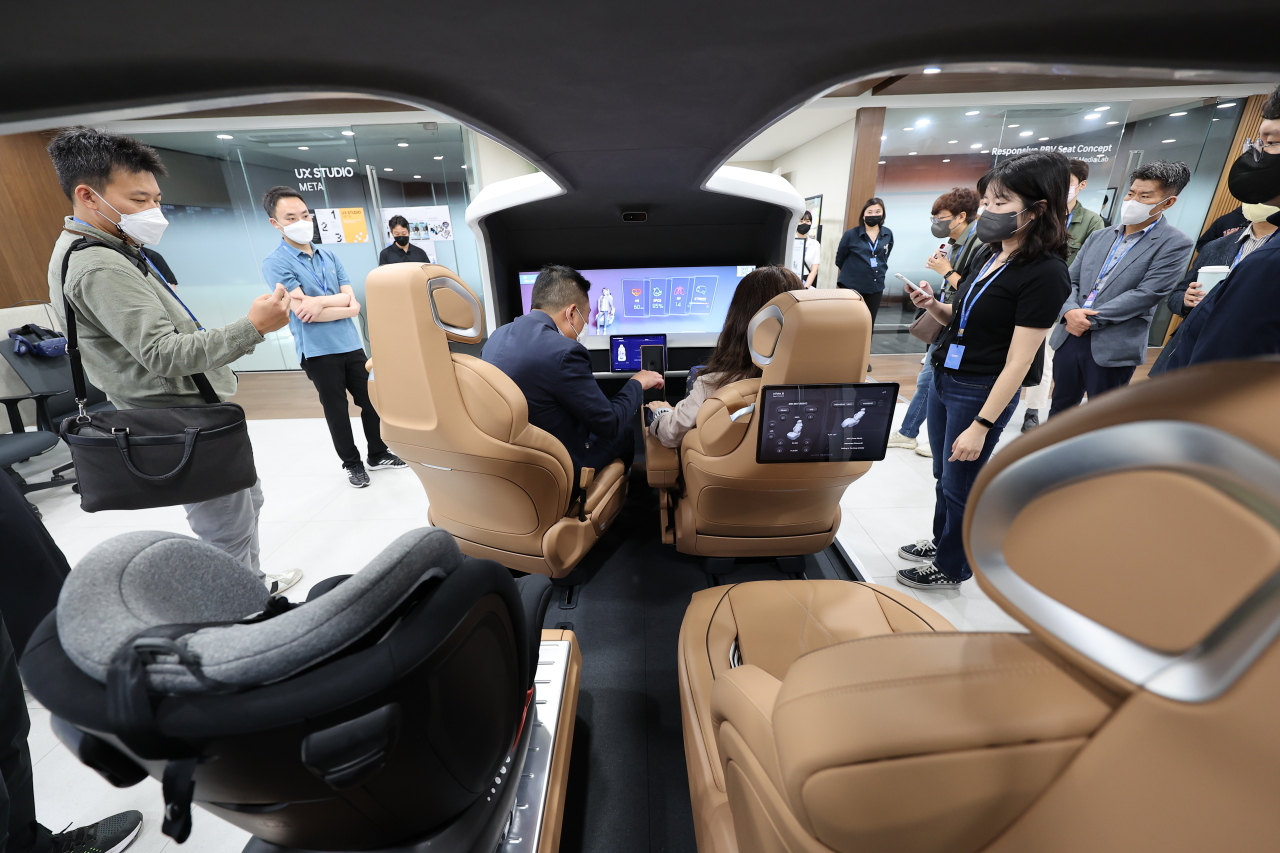'Future of mobility is in user experience technology'
Hyundai Motor Group's top engineers say priority is to make better use of passengers' time inside vehicles
By Kim Da-solPublished : Sept. 18, 2022 - 16:42

Showcasing prototypes and technologies at UX Tech Day 2022 in Seoul on Friday, engineers at the carmaker said these future mobility features are set to make a market debut after 2025.
According to the carmaker, dozens of patent technologies have been applied to prototypes, such as an extended cargo area by removing the first row passenger seat for a pickup van concept with six different modular arrangements for different cargo situations. A door can also be adjusted to open wider or lower for the passenger’s convenience. A third row of seats can be adjusted to be pulled farther to the front to avoid shoulder-bumping between passengers sitting next to each other.
“By having the safety of customers at the top of our agenda, we studied how to offer new mobility features to passengers through writing different scenarios based on the research and conducting focus group interviews,” said Hyundai Motor Group’s product user experience chief Kim Hyo-lin.
“Because future mobility will allow drivers and passengers more freedom (inside the vehicle), offering satisfactory user experience will be the critical value and the point of research for engineers like us,” said Hyundai Motor Group’s car body development center chief Ryu Ji-sung.
According to Ryu, 25 new technologies have been applied to diversify and add value to various convenience features inside the PBV concept models.
“Although we came up with new technologies to innovate the user experience inside the car, the concept of PBV is still not fully understood and considered within the current legal framework. We will continue to seek ways (to innovate user experience in the future mobility) while abiding by the current law," said Yang Hee-won, Hyundai Motor Group’s product development head and vice president.
According to Yang, many countries do not legally allow seats to face backwards in passenger cars, making it difficult for carmakers to redesign the seats to fully make use of dead space. In Korea, neither a carmaker nor driver can install artificial structures inside the car, due to hazards when the car suddenly stops.
While US vehicle makers like Rivian and Canoo have also rolled out concept cars with user-focused features such as a removable roof and in-truck storage for a slide-out camping kitchen, Hyundai Motor Group said it would be a competition of who launches what first in the market.
“From an engineer’s point of view, (their) technologies’ level of completion is still at a nascent stage, something at an ideation level. I would say they (US carmakers) have some exaggerations,” said Ryu.
Yang said future mobility is also about creating stories that make Hyundai vehicles more special and distinctive.
“In the past, vehicles were all about copying each other's technologies for certain features. Now the trend will shift towards what engineers can do to amplify stories for time inside the vehicles and developing technologies that are well-matched to the car,” said Yang.
The carmaker in February unveiled a PBV concept built on Kia’s flagship Ray model as a single-seater van. In May, Hyundai showcased the Niro EV-based Niro Plus specially designed for taxis.
For the mass production of PBVs, Kia announced a plan earlier this year to build PBV-dedicated electric vehicle manufacturing facilities in Korea, with capacity to produce 150,000 units annually.







![[KH Explains] How should Korea adjust its trade defenses against Chinese EVs?](http://res.heraldm.com/phpwas/restmb_idxmake.php?idx=644&simg=/content/image/2024/04/15/20240415050562_0.jpg&u=20240415144419)











![[Today’s K-pop] Stray Kids to return soon: report](http://res.heraldm.com/phpwas/restmb_idxmake.php?idx=642&simg=/content/image/2024/04/16/20240416050713_0.jpg&u=)